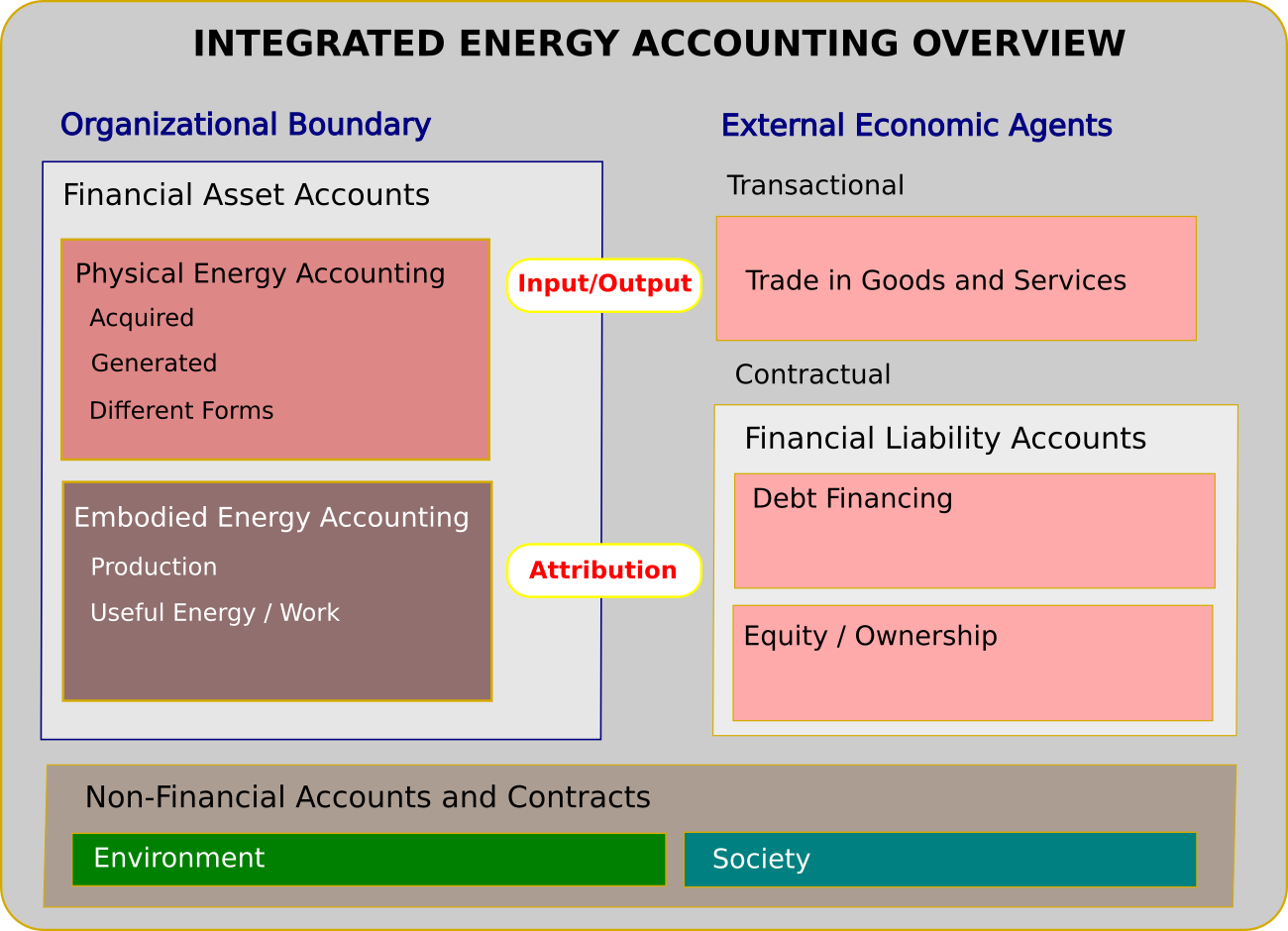14, Integrated Energy Accounting using Relational Databases
Open Risk White Paper 14: Integrated energy accounting using relational databases
In this Open Risk White Paper we demonstrate a concrete implementation of an integrated energy accounting framework using relational database technologies. The framework enables accounting of non-financial disclosures (such as the physical and embodied energy footprints of economic transactions) while enforcing the familiar double-entry balance constraints used to produce conventional (monetary) accounts and financial statements. In addition, it allows enforcing constraints associated with the flow and transformations of energy that can happen inside the organizational perimeter.
We establish the conceptual relation of such an approach with the currently developing European Sustainability Reporting Standards (ESRS) and emissions attributions standards such as PCAF. A simplified sequence capturing transactions of a fictional venture helps illustrate how this type of accounting might work in practice. We also document the details of an open source relational database implementation of the concepts.
An overview of the different elements of an integrates accounting system
A schematic overview of the different elements that an integrated energy accounting system must (in-principle) consider.

The organizational boundary of a reporting entity is maybe the key element to consider first. It is something defined legally in terms of ownership and, by-and-large, it is the same as the financial reporting boundary.
At the most basic level energy accounting would focus on the asset side of the financial balance sheet and examine its physical energy profile (for example the rate of acquisition or generation of energy for business purposes). Reporting these energy mix metrics, along with the corresponding energy intensity ratios using monetary flows from the financial reporting side comprises the essence of current reporting requirements as expressed e.g., by the ESRS Standards.
Linking the energy consumption activity of an entity with its upstream and downstream value chains leads to hybrid environmentally extended input-output models which are currently available only at the macro-economic level, e.g. the EU PEFA system.
Connecting the energy profile of the entity with financial counterparties that provide different forms of capital leads to current environmental footprint attributions models pursued by the financial industry such as PCAF.
While material use of physical energy must in any case be accounted for, the embodied energy in various goods or services offers the most coherent representation as it ties business processes that may be disconnected in time and space yet serve the same economic purpose: providing a final product.
Last but not least, an entity may have non-trivial interactions that are not captured under financial exchanges with economic agents. This segment includes the environmental “account” that may serve both as a source of high-quality energy and as a sink of waste energy. It also includes broader contracts with society, for example the indirect impacts of energy infrastructure on communities.
White Paper Sections
- Motivation and Overview: This is broadly non-technical overview that is building on the more mathematical and conceptual framework developed in WP12
- European Sustainability Reporting Requirements: A review the energy-related reporting requirements of the newly introduced (but not yet final) European Sustainability Reporting Standards (ESRS)
- EcoWidgetCo worked out example: We will track the activities of a fictitious company, an ambitious new green venture that builds micro-mobility widgets using recycled materials and (mostly) renewable energy. We sketch how several periods of EWC’s existence and operations could be represented in an integrated energy accounting context.
- Postgres SQL Implementation: We describe how the framework of integrated energy accounting can be implemented using the concepts and tools of relational databases, with a focus on the schema structure and the triggers that are required to enforce generalized balance sheet equations and physical energy laws.
Download
Source Code
Citation
@ARTICLE{OpenRiskWhitePaper14,
author = {P. Papadopoulos},
year = {2023},
note = {\href{https://www.openriskmanagement.com/wp-content/uploads/2023/05/OpenRiskWP14_190523.pdf}{Download URL}},
title = {{Open risk WP14: Integrated energy accounting using relational databases}},
journal = {Open Risk White Papers}
}
Comment
If you want to comment on this post you can do so on Reddit or alternatively at the Open Risk Commons. Please note that you will need a Reddit or Open Risk Commons account respectively to be able to comment!